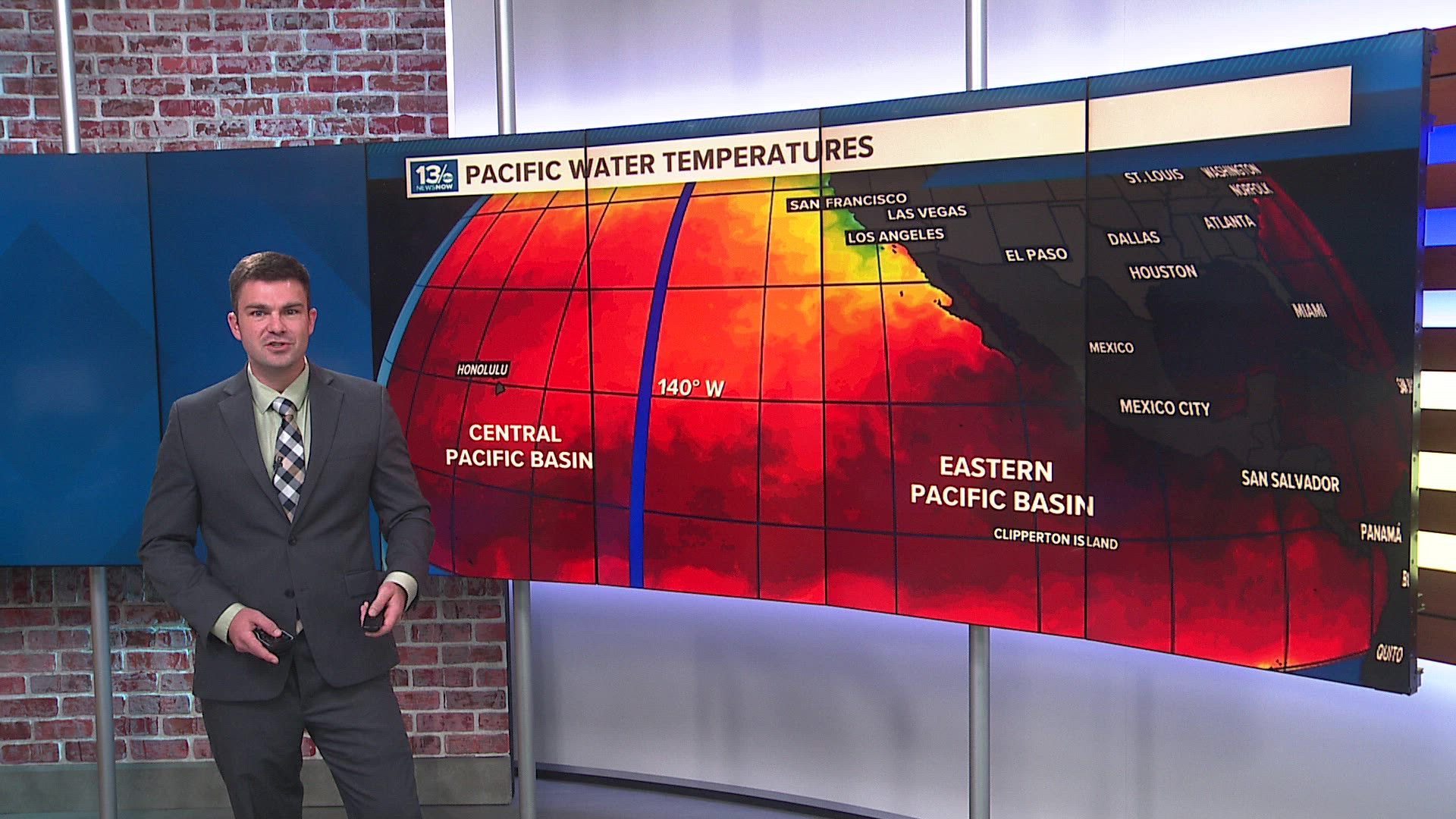NORFOLK, Va. — You would think that an island chain in the middle of the ocean would be a major target for landfalling hurricanes but for Hawaii, that is the contrary. In fact, there has only been two landfalling hurricanes on record, Hurricane Dot in 1959 and Hurricane Iniki in 1992.
That doesn't mean they don't feel the many effects of tropical systems that come close to the islands. According to NOAA's historical hurricane database, around 30 hurricanes have passed within 200 nautical miles of the Big Island, Maui, Honolulu or Kauai from 1950 through 2021.
A landfalling hurricane in Hawaii is rare due to several geographic and climatic factors. Hawaii is located in the Central Pacific, a region that normally sees fewer hurricanes compared to the Atlantic or Eastern Pacific. The Eastern Pacific basin will normally see around 15 named storms, 8 hurricanes, and 4 major hurricanes while the Central Pacific basin (which Hawaii is a part of) will only see an average of 4 named storms, 3 hurricanes and 2 major hurricanes.
One of the key reasons hurricanes don't end up striking the island chain is due to the subtropical high-pressure system, which tends to steer hurricanes away from the islands. This high-pressure system often acts as a barrier, pushing hurricanes either to the south or to the north of Hawaii, reducing the likelihood of a direct hit.
Another major factor is the ocean temperatures around Hawaii. Normally, these waters are not warm as those found in other regions of the Pacific where hurricanes are more likely to occur. To have a tropical cyclone strengthen, sea surface temperatures typically need to be about 80°F. The waters around Hawaii can reach these temperatures but they are often cooler, especially way east of the islands, which can limit the development and intensification of hurricanes.
Another factor is the vertical wind shear around the islands which is the change in wind speed and direction with height in the atmosphere. When tropical systems come across strong wind shear, it can disrupt the structure of a hurricane, weakening it or preventing it from forming altogether. The Central Pacific often experiences higher wind shear, which can deter the formation of strong hurricanes near Hawaii.
Lastly, the El Niño and La Niña phenomena also play a role. During El Niño years, the Central Pacific can see an increase in hurricane activity because the waters tend to be warmer, but during La Niña years, the activity tends to decrease.

